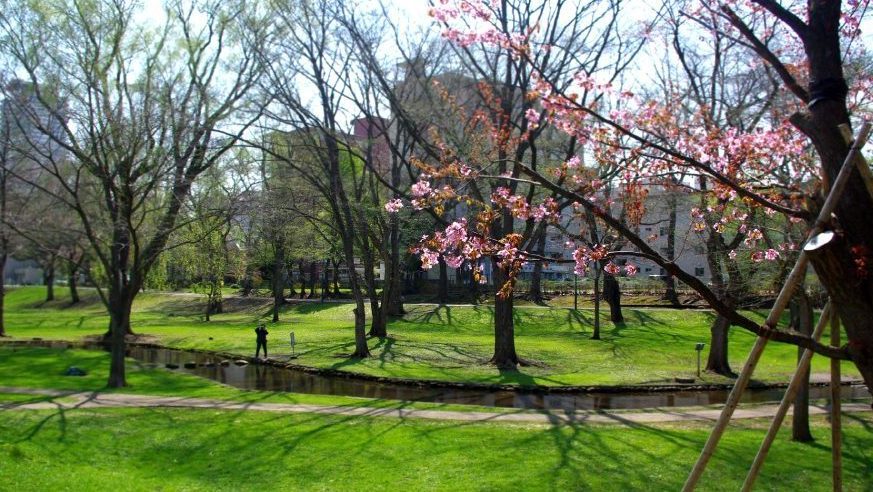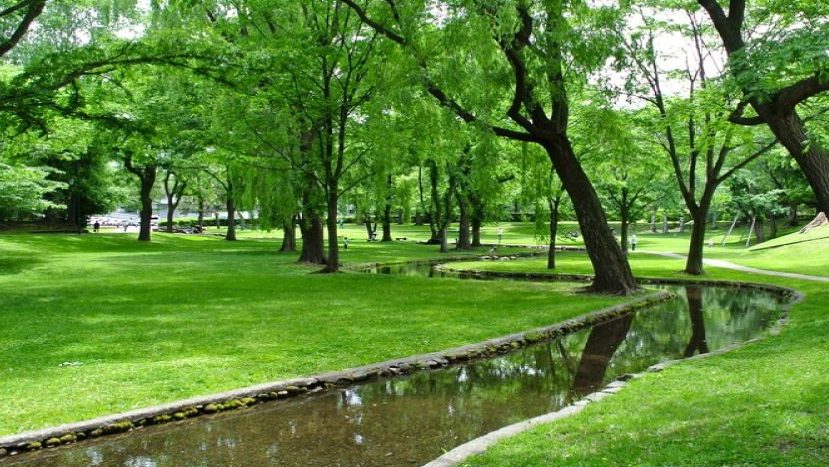Central Lawn
If you enter the Main Gate and walk straight with the southern gate on your left, you will see a gently sloped green area around you. This 12,000-m2 area is known as the Central Lawn. The contrast of light and shade among the trees accentuates the soft green grass in summer. While the rivelut currently running through the central lawn is an artificial one with a concrete base and a flow generated by a pump, there used to be a natural stream here known as the Sakushukotoni River. The old river had its source in the spring near the north side of the Hokkaido University Botanical Garden, and ran through the area east of the Clark Memorial Student Center, Central Lawn, and then the areas west of the Centennial Hall, south of Ono Pond and northwest of the university before joining the Kotoni River. Old master plans from circa 1909, show Chuo Lawn was used as a skating rink, and we also know that salmon were swimming up the river up until the 1940’s.
According to an article in Elm published by Kenzo Iwasawa, Hans Koller, who was posted as a German teacher of a preparatory course at Hokkaido University in July 1908, gave ski lessons to students on one of the snowy slopes. It was thought to be one or two years earlier than the time when Theodor Edler von Lerch gave ski lessons to Japanese military officers in Takada, Niigata, in 1911, which is thought to be the origin of skiing in Japan. If this is indeed the case, it would make the Central Lawn the birthplace of skiing in Japan.
On the northwest corner of the Central Lawn is the bust of William S. Clark, another symbol of Hokkaido University. The first version of the statue was created by the sculptor Sekiro Tajima in 1926 as part of the 50th anniversary of the university’s foundation, with contributions from within and outside the university. Dr. Clark’s famous phrase, “Boys be Ambitious,” was inscribed on its base. A design of the gigantic water lily from the Amazon, Victoria regia, which motivated Dr. Clark to be a botanist/agriculturist, was also on the base at the suggestion of Kingo Miyabe, who designed and became the first director of the Hokkaido University Botanical Garden. However, the first statue was melted down in 1943 under the Metal Recovery Act during World War II. The current statue was recast by the sculptor Kensei Kato in 1948. Although Mr. Tajima had already passed away, the original cast was fortunately stored in the Sapporo Dokuritsu Church. The unveiling ceremony was held on October 8th, 1948.



